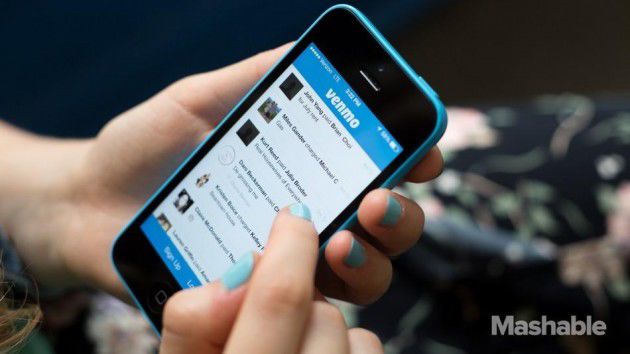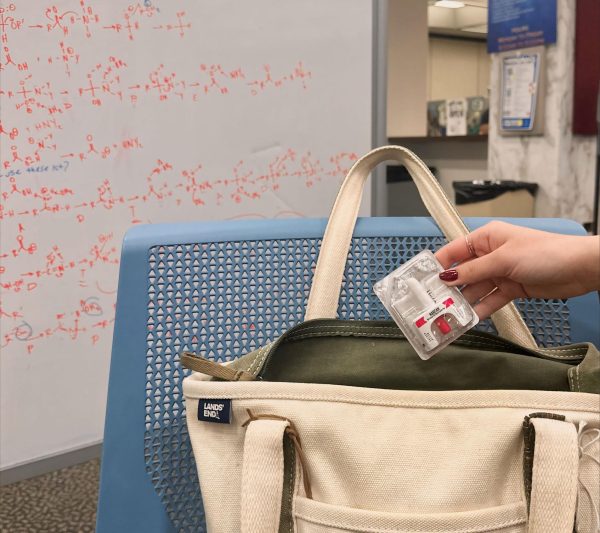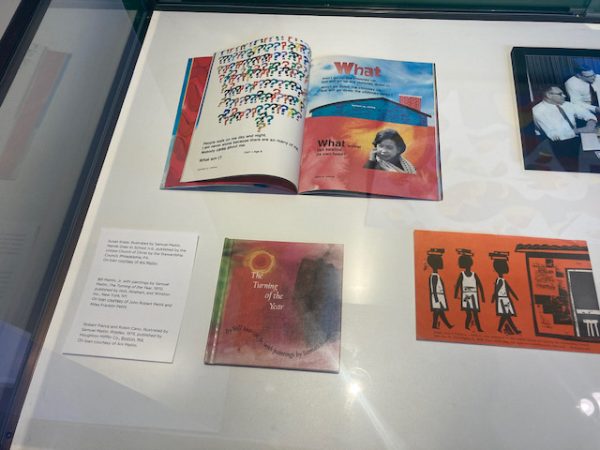Technology is changing student spending
February 21, 2017
I spent $40 the other day and never took out my wallet. The barista at Starbucks scanned my phone, allowing me to purchase my morning coffee. I venmoed my roommate for dinner. Uber scooped about $12 out of my bank account for a ride home. No cash, no card. It didn’t even feel like spending.
Many say Steve Jobs changed the way we use money. Everyone appears to be hopping aboard the Apple Pay and Venmo trains, saying “sayonara” to the days of cash, checkbooks and ATMs. Especially prevalent for tech-savvy millennials, these spending trends shed light on a new financial and social landscape that college students are just beginning to navigate.
In surveying several students at the University, I found most spend money on things like food, drinks, activities and transportation. In order to pay for these things, they often use their phones and services like Venmo.
“At first, I felt weird managing money through an app like that,” junior Amy Naslonski said. “But then it got to the point where it was debilitating not to have it because there were so many times people wanted to Venmo me or needed me to Venmo them.”
Naslonski just downloaded Venmo this semester and emphasized how much she has already used it in the past five weeks.
Seniors note a distinct change in spending that occurred somewhere within their four years at the University. When I first told my roommate about this article, I asked her how she thinks spending has changed since our freshman year. “I spend a hell of a lot more money on Ubers,” she retorted.
And many seniors, including myself, agree. When we were freshmen, Uber was in its infancy, and ordering a cab was the primary method of transportation around the Main Line. We needed cash to pay and tip the drivers, and it was a process. Going to the ATM. Scraping together a mish-mashed pile of one dollar bills. Constantly indebted three or four dollars to your hallmates for the last minute plans that didn’t allow time for a trip to Wells Fargo. These were normal, unquestioned rituals of our college social lives.
“I think I still have my go-to cab driver’s number in my phone,” senior Cameron Markowski jokes.
Today, I imagine Main Line Taxi sighing at the sight of Villanova nightlife, shaking a somewhat jealous fist at Uber, the $1.5 billion company who now reaps the benefits of students without cars.
It’s no surprise that all of these expenditures add up. Aside from tuition or room and board, the College Board reports the average spending budget for a student at a private university is around $3,950 per year. According to Assistant Professor of Economics Mary Kelly, apps like Uber and Venmo hold the potential to significantly increase this number.
“I think, all else equal, it makes transactions more efficient,” she said. “And you’re not thinking ‘how much money do I have available?’ When it’s not affecting you, you can just say ‘Oh, I’ll put it on my card.’ So because of the convenience, and efficiency, I do think you will see that number increasing.”
Kelly, who just downloaded Venmo a few weeks ago, also mentions security issues related to the application.
“When you think about how easy it is to hack things, it’s concerning,” she says. “We have a chip code on our credit cards now that give us an extra level of security, and I’m not sure the apps’ levels of security are there yet. But the risk takers are the younger folks—that’s why it’s starting with millennials. Unlike my generation or my mom’s generation, you guys are going to be driving that change because you’ll feel the most comfortable adopting it.”
Despite her worries over security, Kelly believes these apps allow for large-scale economic benefits.
“If you make buying things easier, it will support rather than hinder economic activity,” she said. “I think the U.S. is behind the curve a little bit. The banks don’t really communicate well with each other—yet. You can transfer money to somebody else within Wells Fargo or within Bank of America, but doing it across banks is a bit harder. They’ll have to get to that. Because I think Venmo, and the others, are pushing the envelope a little. And if that gets easier, and we can access cash more efficiently, it will be a good thing.”
Looking to the future, Kelly is interested in watching these applications evolve. Because Venmo doesn’t make money off of peer-to-peer services, she said, it needs to find a way to monetize its product. Whether it is adding advertisements or including transaction fees, “that’s going to tick you guys off big time,” she jokes. “So it’ll be interesting to see what happens.”
Alongside shifts in student finances, virtual spending also impacts student behaviors. One way is rather obvious: they influence the way millennials speak, constantly reshaping the English language. Phrases like, “I’ll uber to you” and “You can just venmo me” are commonplace. Our parents might question these peculiar verb choices, but to us, it’s the new norm.
And language is just the beginning. According to Alice Robb of “Fusion”, the social component of apps like Venmo also shifts personal finances to public ones. Along with each money transfer comes the opportunity to share what you’re spending money on and scroll through a feed of your friends’ recent transfers. According to expert of psychology and behavioral economics Dan Ariely, this public feed “gets people to look and think about the more humorous sides of spending—making spending more about other things.”
When students’ purchasing energy is spent crafting relics of what they’ve used their money for (i.e. emojis of beer mugs or taxi cabs), the feeling of monetary deficit is replaced by feelings of humor or popularity. This new line of thinking also contributes to an overall increase of spending while in college.
Students also point out unprecedented social challenges that come with using Venmo. One student, for example, says it draws her away from the personal interaction that comes with owing someone money.
“The other day, I bought a concert ticket from someone, but I just venmoed her the money and that was that,” senior Elizabeth Manheimer said. “Before Venmo, I probably would have interacted with her, thanked her—or she thanked me—one of the two. We could’ve talked about the concert. But now that type of conversation doesn’t need to happen anymore, so it doesn’t.”
Other students, however, say Venmo is an entirely new social convention that brings people closer together rather than further apart.
“When you’re paying someone back with cash, it takes longer,” junior Caitlin McGorry said. “You have to find time to go to the ATM, then find time to meet up, and then you start to feel bad it’s taking so long to get your money back, so Venmo is easier and makes you feel better you’re paying someone back immediately.”
“And usually when I’m paying people with Venmo, I’m literally right next to them,” Naslonski added. “Then we add the funny captions and emojis and are like, giggling about it. It’s like a social thing in and of itself.”
As of right now, whether or not these apps benefit or hinder our financial and social lives is still up for debate. Yet, such advancements certainly carve a new space worthy of our attention, and don a pretty large price tag while doing so. It seems as though we either need to pay more attention to them or pay the price of not.












